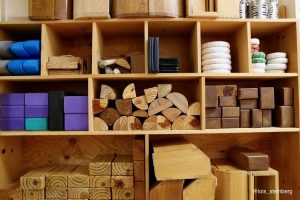Why we use props in yoga
B.K.S. Iyengar invented ways to use props to support the body in yoga poses. He saw that many people had difficultly achieving the poses and therefore could not reap the benefits of a practice. His props help when there is a limitation like stiffness or injury.

At first, Iyengar used found objects as props, such as household furniture or bricks from a construction site. Over time he began creating props specifically for the practice. Common props, now used in most studios around the globe, include: blocks, straps, blankets and bolsters. Additional props often used in Iyengar Yoga centers include chairs, rope wall and wooden structures like benches.
A teacher helps the students learn how to do the poses and when and how to use a prop. We try to avoid thinking that each pose needs a set of props, instead we use a prop when there is a clear need. For example, a student attempts to touch the floor and keep the knees from bending. In the attempt the student sees they cannot reach the floor so they place a block under their hand. The floor is brought up to them.
Support one part or the entire body
Placing a block under the hand supports one area of the body. The rest of the body benefits but it’s only the hand that is touching the block. We also use props to support the entire body (see image below).

In the image above the students are doing the pose with full support of the props and are able to hold the pose for much longer, sometimes for 10-15 minutes. The struggle to hold the pose is eliminated and the effects are more profound. One can more easily detect the presence and movement of the breath, which serves to unify the physical, mental and spiritual body.
The reasons for using props are varied. The same prop can have different effects for different bodies. All students, of all levels, need help learning how to use the props to best serve their unique body.